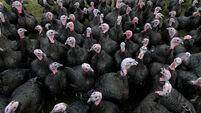Markets must set out their stall
Bord Bia predicts that overall market numbers can be expected to remain static during 2014 and 2015. But there is potential to grow the numbers significantly by the end of the decade — if the correct actions are taken, it says.
The food board says this makes it an exciting period for the sector, but also a time for watchfulness and foresight.










